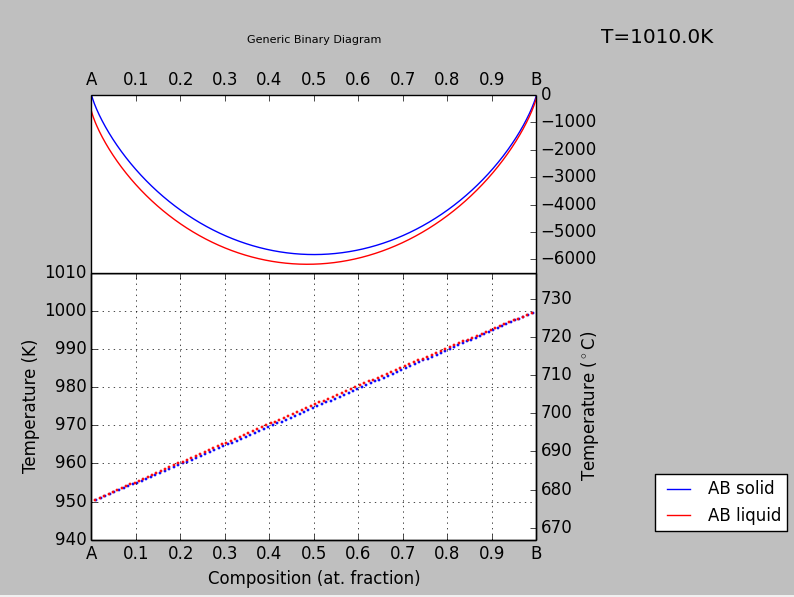I'm a little confused about plotting a binary eutectic diagram (temperature vs mole fraction), and finding the eutectic point. I understand the eutectic point is the lowest temperature that a mixture of the two substances will melt, and that this is somehow related to minimizing the Gibbs free energy of the system. However, I can't figure out how to actually solve for the eutectic point or how to graph it based on the melting temperature and enthalpy of fusion of two compounds.
I found a formula $$\frac{X_A}{X_B} = \frac{T_B-T_0}{T_A-T_0}$$ where X is the mole fraction of each component, but I was getting unrealistic answers for certain mole fractions, e.g. for $$X_A=.9$$ I was getting a value greater than the melting point of A. And for $$X_A=X_B$$ this equation can't be solved. Also, this formula doesn't take into account the enthalpy of fusion, so doesn't seem to relate to the free energy.
The volume & entropy of the system is unknown, so I wasn't sure how to set up an equation to solve for the Gibbs free energy of either component, but I was thinking that if I had an equation, I would be able to solve a system of equations for the lowest free energy and plot it (somehow?).
Can anyone explain the relationship between the making a eutectic diagram and the free energy of components in the system?
Edit: Thank you for the answer! That was really helpful conceptually in relating the free energy of a mixture to that of the pure substances, but I actually have a problem from the class that says:
Calculate and graph the binary eutectic melting diagram for the system diopside - anorthite using the data given below, and assuming for both diopside and anorthite that the activity in the liquid is equal to the mole fraction.
\begin{array}{lll} \text{Diopside}\, (\ce{CaMgSi2O6}): & \Delta H_\mathrm{fusion} = \pu{20,000 cal/mol} & T_\mathrm{fusion} = \pu{1390^\circ C} \\ \text{Anorthite}\, (\ce{CaAl2Si2O6}): & \Delta H_\mathrm{fusion} = \pu{29,000 cal/mol} & T_\mathrm{fusion} = \pu{1553^\circ C} \end{array}
So it must be possible to find based on these parameters right? Is the fact that the activity is equal to the mole fraction make the difference in solving it?


